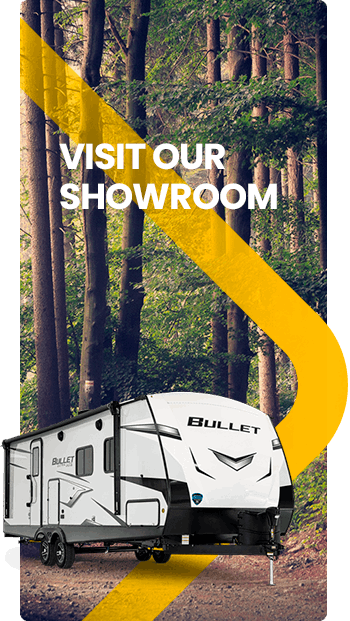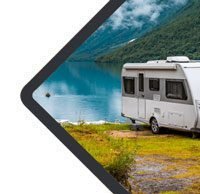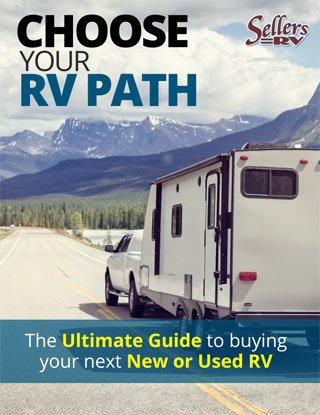FAQ
Why does my battery go dead?
If I have a Bypass hot water tank how do I winterize my unit?
Step #1: ONLY USE NON-TOXIC ANTIFREEZE. Drain all water from you fresh tank and water lines. Empty waste tanks. Drain water heater (open lower drain plug and also open pressure valve).
Step #2: On the back your water heater there will be a set of three valves (this is you bypass kit). Close the hot valve and the cold valve on the lines. (These two lines will be the only two lines heading in to your water heater) In this step all you’re doing is isolating the water heater and not allowing anifreeze in the hot water tank.
Step #3: Open your bypass line. This is the line the is conneted to your hot and cold line. This step is allowing your line to come together and create a “loop” so that you can put antifreeze into both your hot and cold lines.
Step #4: Put antifreeze into your unit, there are two ways of doing this.
1st way: Find the suction inlet to your water pump (it’s the line that is connected to your fresh water tank). In many newer units there will already be a clear plastic line connected to your water pump that you can use. If that’s the case, then place hose directly into the jug of antifreeze. If a line isn’t already there you’ll have to install one.
2nd way: Pour antifreeze into your fresh water tank. You will need to use alot more antifreeze for this way.
Step#5: Turn the water pump on and pressurize the system.
Starting with the closest faucet, slowly open the hot and then cold valves until antifreeze appears. Replace the antifreeze container as required. Repeat this process on all faucets from the closest to the farthest away. Don’t forget the outside shower, if equipped. Flush the toilet until antifreeze appears. Turn the water pump off and open a faucet to release the pressure. Go outside to the city water inlet. Remove the small screen over the inlet and push in on the valve with a small screwdriver until you see antifreeze. Replace the screen. Pour a cupful of antifreeze down each drain. Pour a couple of cups in the toilet and flush into the holding tank. If your water heater has an electric heating element make sure it is turned off. This will protect the element if the unit is plugged in while being stored. Make sure all the faucets are closed. Consult your owner manuals for winterizing icemakers and washing machines.
The unit is winterized.
How should I store my unit?
If you choose to buy a cover for the RV, be sure it is made of a breathable material. This will help in preventing mold and mildew.
Chock the wheels front and rear. Leave the parking brake off. If you’re storing a Pop Up angle the tongue downward to assist in snow and water run off.
Inflate the tires to the manufacturer’s recommended max cold pressure. Cover the tires to protect them from the harmful ultraviolet rays. Place something between the tires and the ground. Make sure whatever you use is larger than the actual foot print of the tire.
If you do not remove the tires for long-term storage periodically move the vehicle to prevent flat spots on the tires.
Close all of the window blinds to avoid sun exposure to the carpet, drapes and upholstery.
Wash the exterior of the unit and clean the interior thoroughly.
Make sure the awning fabric is clean and dry before storing.
On a Pop Up make absolutely sure the fabric is clean and dry before storing. This is a good time to check for tears, and repair the fabric.
Inspect all roof seams, body seams and window sealant for cracks and openings. Water can get in the smallest openings so really inspect all sealants. Consult your dealer for sealants compatible with these materials.
Service all locks with a graphite spray lubricant. Lubricate all hinges and moving parts with WD 40.
Turn all LP gas appliances off. Turn the main LP gas supply valve off. If you’re storing a Pop Up or Travel Trailer make sure the LP gas regulator is covered.
Remove the fuse for the LP gas leak detector while the unit is in storage. This will prevent the batteries from discharging. Don’t forget to replace it next spring.
Insects are attracted to the odorant that is added to LP gas. To prevent mud daubers and wasps from building nests in and around your gas appliances, cover the refrigerator vent, the furnace vent and the water heater vent.
Inspect the underside of the unit thoroughly. Look for anywhere that mice or other rodents can get it, and seal as necessary.
Strategically place mouse and ant traps in and around the unit. Avoid using mouse poison inside the RV. Many RVers recommend using dryer sheets like Bounce to keep mice out.
Remove all perishables and anything that can freeze.
Leave doors, drawers and cabinets open.
Remove all consumables that would attract mice and other rodents.
Defrost the freezer compartment and clean the refrigerator. Leave the refrigerator doors open and place some baking soda inside to absorb odours.
Clean the air conditioner filters, and cover the air conditioner.
Turn off the main breaker and unplug all appliances.
Remove dry cell batteries in clocks, flashlights and other items.
The use of Maxx Air products will provide the airflow and ventilation required during storage while keeping the elements out.
What should I do before going camping?
Check that chassis: Give your rig a good going over by checking all batteries, lights, brakes and wheel lugs. Don’t forget the tire pressure.
You might need that generator: Clean up your rig’s generator by servicing the air cleaner, check the oil level and make sure it can carry a full charge. Clean the connections, the governor and the choke linkage.
Ya gotta keep the beer cold, too: Check your refrigerator by operating it on gas and looking at the burner to ensure that the flame burns blue. Make sure there are no obstructions in the ventilation system. Even check the knobs to make sure they aren’t stripped. That could cause a false thermostat reading.
It might get hot: You paid for that air conditioner, so make sure it works correctly. Check all of the air filters, and make sure the coils are clean and free of debris. Check the voltage at the outside panel. Most systems are designed to operate at 120 volts plus or minus 10 percent.
Now go inside: Turn off the water pump switch, close the windows and vents and cabinet drawers. Make sure the refrigerator door is closed tightly.
How about your fire extinguishers? Are they in working order?
It’s the little things you forget: Don’t leave without your prescription medicines and copies of those prescriptions; your sunglasses; camera and film; stationery and stamps; your address book; a tire gauge; spare parts for your generator; a first aid kit; pet supplies, extra toilet chemicals and paper and maps you’ll need.
Don’t forget the “”big picture””: Be sure your RV insurance is current. Confirm all of your reservations, discontinue your mail and newspaper delivery and notify your neighbors of your return date.
And finally, just before you pull out: Disconnect and stow the electrical cord, sewer hose and water hose. Check to make sure the TV antenna is down. Turn off the propane. Raise the leveling jacks. Secure the awning, retract the steps, lock the outside door, adjust the rearview mirror, buckle up and GO CAMPING!







